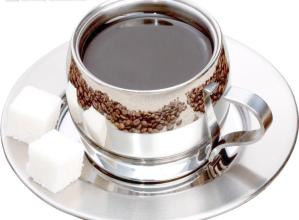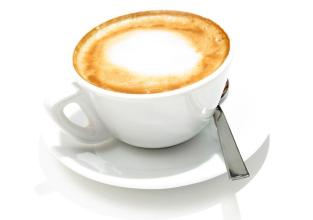Coffee bean treatment method introduction what is coffee treatment method
Coffee fruit after taking off the pulp
The quality of honey treatment is more stable than that of drying treatment, but not as good as that of washing treatment. This method of processing coffee beans by honey treatment has recently been sought after by coffee lovers. It has a sweet taste and is rich in Crema. It is suitable for extracting Espresso from the base of Italian coffee. The advantage is that it can restore the flavor of coffee beans, the coffee is more sweet, and the taste of red wine is outstanding. The disadvantage is that coffee beans are very vulnerable to contamination and may become moldy when the exocarp of coffee berries is removed and may become moldy. In 2000, the mayor of Malaba asked for development assistance from the National University of Rwanda (UNR), which is located near the city of Butare. The following year, the National University of Rwanda helped to set up the Joint strengthening Rwanda Agricultural Partnership Project (PEARL). The PEARL project is also supported by several organizations: the United States Agency for International Development (USAID), Michigan State University, Texas A & M University, and many other Rwandan organizations, including the National University of Rwanda, the National Agricultural Laboratory (ISAR) and the Gejali Institute of Technology Management (KIST). In February 2001, PEARL began working with Abauzam Gamby to improve the quality of coffee to meet the standards of the professional coffee market in the United States, and then sell the coffee to the United States.
The first problem for Malaba coffee farmers is to set up a cleaning station. The coffee fruit must be transported to the cleaning station to wash the sugar under the skin of the coffee bean within 12 hours after picking, otherwise the flavor of the coffee will be greatly damaged. In July 2001, with funding from UNR, the Ministry of Culture and Industry of Rwanda (Office des Cultures Industrielles du Rwanda,OCIR-Caf é), ACDI/VOCA and ISAR, they set up the first cleaning station near the main road in the Cyarumbo district. However, the cleaning station was not opened until the harvest time, so only 200 kilograms (441 pounds) of the harvest were washed that year. However, the result was surprisingly good. In 2002, the cleaning station was upgraded to supply more coffee processing. ACDI/VOCA is responsible for funding the construction of pipelines to bring in Mount Huye mineral water and help improve the efficiency of cleaning stations. The pipeline was opened in March 2002.
During the 2002 harvest season, Rwanda introduced a new certification system to ensure that coffee beans shipped to cleaning stations are of proper quality. About half of Abauzam Gambi's members are certified, and cooperatives are able to find buyers in professional markets in Europe and North America.
Be recognized by the world
Malaba coffee beans are manually selected and classified according to their quality.
Malaba coffee beans are manually selected and classified according to their quality.
PEARL brought coffee experts to Rwanda to maintain contact with the seller, the Public Coffee Company (Community Coffee) in Louisy, USA, and sent samples to Louisiana. In June 2002, representatives of public coffee visited Malaba. At that time, the current President of Rwanda, Paul Kagame, declared the importance of the plan on behalf of the government. Public Coffee bought 18000 kilograms (40000 pounds) of Malaba beans at $3 per kilogram above the average market price. Coffee beans are shipped to Louisiana, where they are roasted locally and used in the company's delicate coffee. This is also the first direct contract between an American roasting company and an African coffee cooperative.
Semi-washing, also known as "honey treatment", is a compromise between drying and washing, eliminating the need to ferment coffee fruits. Harvest → cistern (remove impurities and immature beans) → pulp removal machine (remove pulp and impurities) → washing pool (select light and hard beans) → sun drying field (or dryer) → sheller (removal of endocarp) → classification (electronic bean selector or hand selection, screen, etc.) → outlet washing drying field
The appearance of coffee beans processed by washing is neat, and the impurities and defective beans are less, and the water content of coffee beans is generally about 16%. The advantage is less miscellaneous flavor, clear taste and bright sour taste; the biggest disadvantage is that coffee beans are easy to get sour and astringent taste during fermentation, and a fermented bean will spoil 50 grams of bean washing.
Water washing is the most popular treatment method at present, and most boutique coffee beans will choose water washing method. Washing coffee refining process: harvesting → storage tank (removal of impurities and immature beans) → pulp removal machine (removal of pulp and impurities) → fermentation tank (removal of mucous membrane on endocarp) → washing pool (selection of light and hard beans) → sun drying field (or dryer) → sheller (removal of endocarp) → grading (electronic bean selector or hand selection, Screen, etc.) the color of raw beans treated by → export drying method is yellow. The water content of coffee beans is generally about 11% and 12%. The advantage is that sun beans have better sweetness and mellow thickness, and less sour taste, so many coffee fans like it very much. The disadvantage is that due to the use of artificial and natural treatment methods in the process, the sun-dried beans do not look good in appearance, the quality is not good-looking, and the quality is unstable, and there will be greater ups and downs and drying is a traditional coffee bean processing method. fruits need to be dried in the natural sun after harvest, and some mechanical drying is carried out at the same time. The process is: harvest → sun field (sunlight exposure) → sheller (remove pulp, etc.) → grading (electronic bean selector or hand selection, screen, etc.) → export. Coffee refining methods are mainly divided into three categories: drying method, water washing method and semi-washing method. Generally speaking, the coffee fruit of 5000KG can be obtained from 1000kg coffee raw beans.

Important Notice :
前街咖啡 FrontStreet Coffee has moved to new addredd:
FrontStreet Coffee Address: 315,Donghua East Road,GuangZhou
Tel:020 38364473
- Prev

Treatment of coffee beans Coffee beans treated with honey
We know that the three treatment methods of raw coffee beans can be divided into three types. The distinction between each method is based on the fact that several layers of matter are removed from the fruit before the coffee is dried. The following is a list of the three major processing methods: 1. Natural sun treatment: retain all substances 2. Honey treatment: remove the peel and pulp and retain part or all of the mucous membrane (honey) 3. Washing method
- Next

How to make coffee, milk, coffee, flower, coffee, coffee.
1. Do not put the steam pipe into the milk, because there may be some condensed water in the steam pipe, so let off some steam in the front section and drain the excess water by the way. two。 Insert the thermometer into the milk container, then insert the steam pipe obliquely into the milk and turn on the steam switch. 3. Slowly adjust the position of the steam nozzle to a little bit from the surface of the milk, but do not
Related
- What is the meaning of lactic acid fermentation with coffee bean treatment?
- How to judge the state of foam by sound?
- How does the latte pull out the unicorn pattern? Come to get for a little trick to improve the flower pull!
- Will flower pulling affect the taste of the latte?
- Do you know the history of coffee?
- The difference between honey treatment and sun washing what is raisin honey treatment?
- What kind of milk can a novice use to make coffee foam to keep the foam longer? The correct method and skills of milking tutorial sharing
- Why do washed coffee beans taste sour? Flavor characteristics of washed Coffee
- Introduction to the skill of how to practice the size and height of water injection around the circle of hand-brewed coffee
- How do beginners practice coffee flower drawing from scratch?

